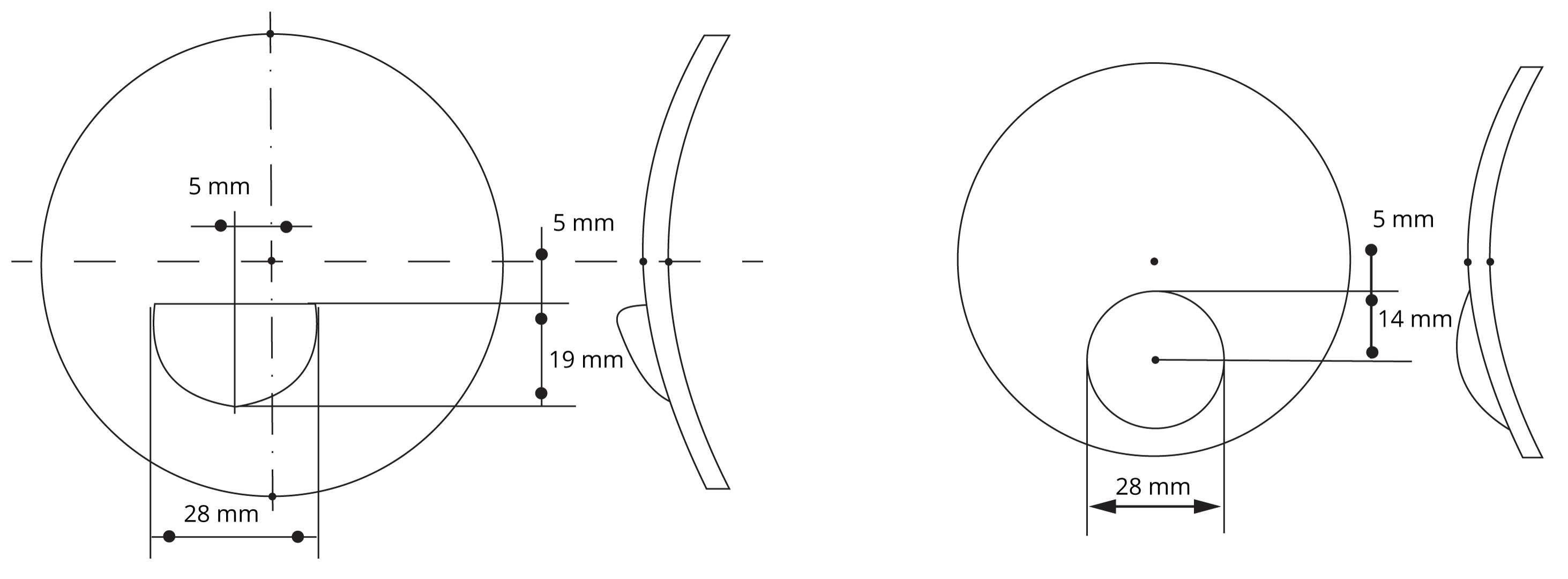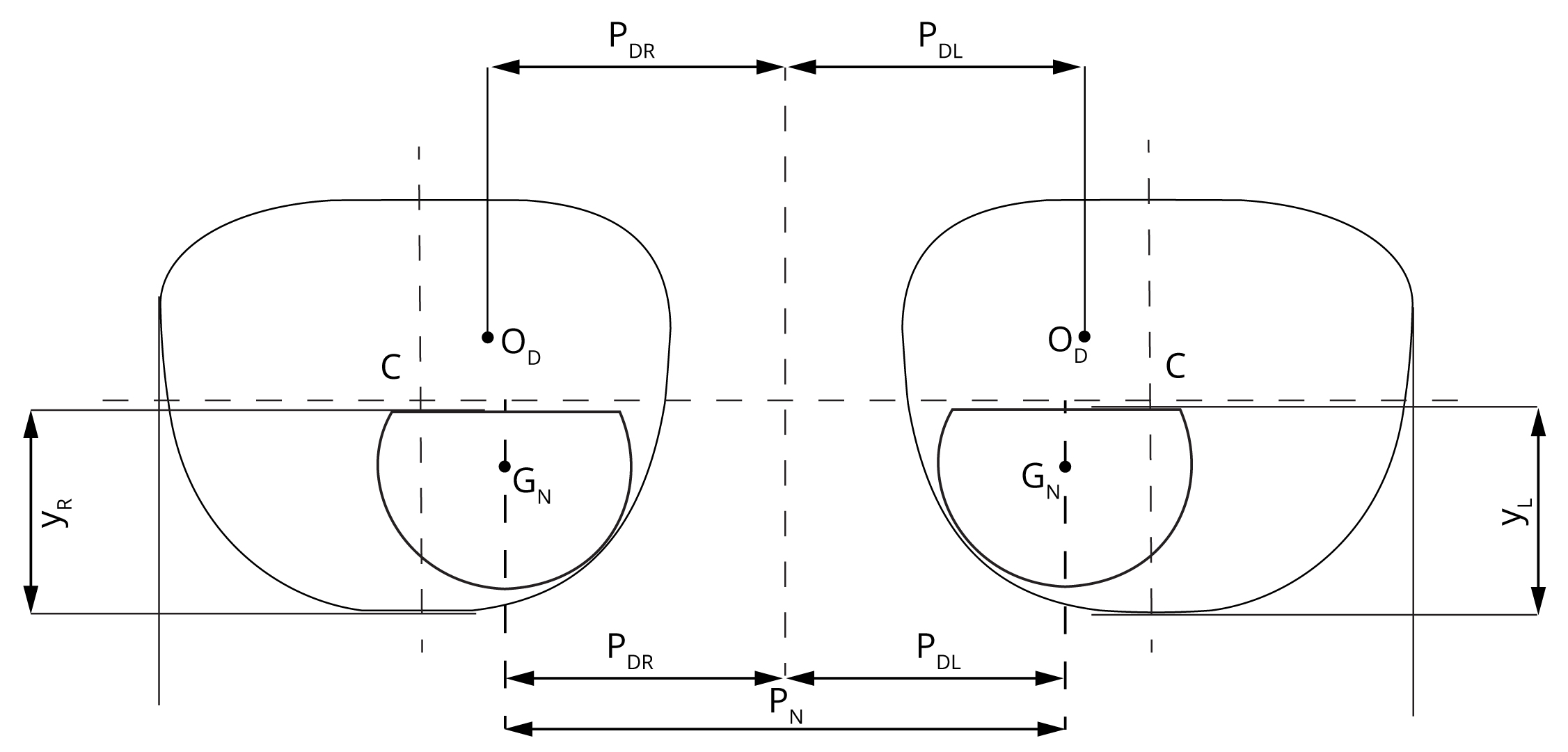Bifocal lens centering
Introduction
Bifocal lens is usually used for correction of ametropia and presbyopia. We distinguish mineral lenses with additional near segment, with grinded near segment and plastic bifocal lenses. Further we can use bifocal lens type E-line which are used for accommodative strabismus correction. According the type of near segment we distinguish type C, P, D, O, etc. Typical near segment decentration is 2.5 mm nasally.

The most used bifocal lens these days is plastic with D near segment.
According to Rutrle (2001) we have to properly centre distance optical segment center (OD), geometric centre of the near segment (GN), eventually optical centre of near segment (ON), nasal decentration (x) and high of the step (y) between distance and near segment.

Both segments should enable point imaging by respect real rotation eye centre. We should also induce minimal prism effect on the near segment edge and respect hygienic and aesthetic needs (smooth transition between segments). Near segment edge should be placed appropriate high. If patient has distance gaze pupils are above edge and if patient gaze in near pupils are bellow edge. According to Rutrle (2001) we recommend to center near segment edge on inferior part of the iris. Najman (2010) recommends putting the edge of the segment 2 mm below edge of inferior eyelid. In practice is sometimes used centration of the near segment edge on the edge of inferior eyelid.
Goals
- Bifocal lens centering
- Calculation of the near segment decentration (hR, hL)
- Calculate prism difference at near segment edge
Equipment
Hand PD ruler, bifocal lens, spectacle frame, calculator, special pencil on demo-foil.
Methods
Bifocal lens centering
Patient wears spectacle frame with sufficient depth of frame eye (height). Patient should minimally use 15 mm of near segment height. Mark the pupil position on demo-foil during natural distance head position and height of lower eyelid.
Calculation of the near segment decentration (hR, hL)
Measure patient’s pupillary distance for far and near. Calculate right and left decentration for ideal bifocal lens.
Calculate prism difference at near segment edge
Measure vertex refraction of the distance and near segment. Further measure distance from far optical center to edge and from near optical center to edge in millimeters. According the Prentice formula calculate prism effect on the edge of near segment. We will calculate prism effect on the distance side (𝚫PD) and near side (𝚫PN). If the prismatic effect is the same power and same base orientation, there is no image skipping (only theoretical example). Parameter dD and dN will be measured from your spectacle lens.

Results
Draw schematically spectacle frame and write measured values in the picture.
hP =
hL =
𝚫D =
𝚫N =
Discussion
If we center bifocal lenses we should respect height of near segment’s edge. We distinguish upper decentration as more critical. If we center the near segment edge higher than is recommended patient will look on distance through near segment. This situation can cause serious problems.
Conclusion, notes, comments
How height is placed near segment edge in your spectacles? Is the near segment height appropriate?
Was the horizontal decentration of the bifocal lenses similar on OD and OS?
Calculate theoretical placement of the optical centre of the near segment if the prism effect on the edge is reduced to zero.